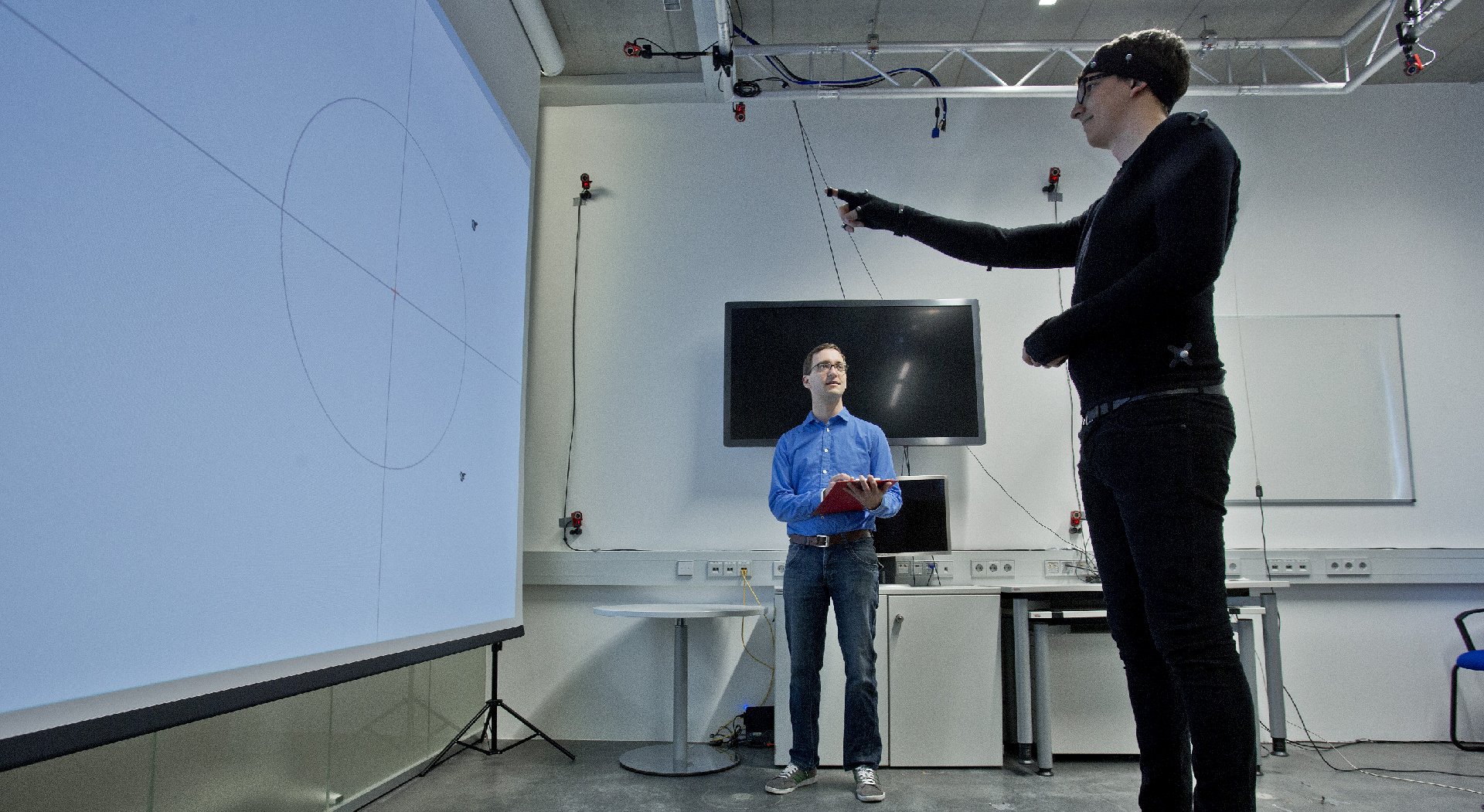Distant pointing at objects and persons is a highly expressive gesture that is widely used in human communication. Pointing is also used to control a range of interactive systems. For determining where a user is pointing at, different ray casting methods have been proposed. In this paper we assess how accurately humans point over distance and how to improve it. Participants pointed at projected targets on a wall display from 2m and 3m while standing and sitting. Testing three common ray casting methods, we found that even with the most accurate one the average error is 61.3cm. We found that all tested ray casting methods are affected by systematic displacements. Therefore, we trained a polynomial to compensate this displacement. We show that using a user-, pose-, and distant-independent quartic polynomial can reduce the average error by 37.3%.
Modeling Distant Pointing for Compensating Systematic Displacements

Modeling Distant Pointing for Compensating Systematic Displacements. In: Proceedings of the 33rd Annual ACM Conference on Human Factors in Computing Systems, pp. 4165–4168, ACM, Seoul, Republic of Korea, 2015, ISBN: 978-1-4503-3145-6.
Published in Project
Comments